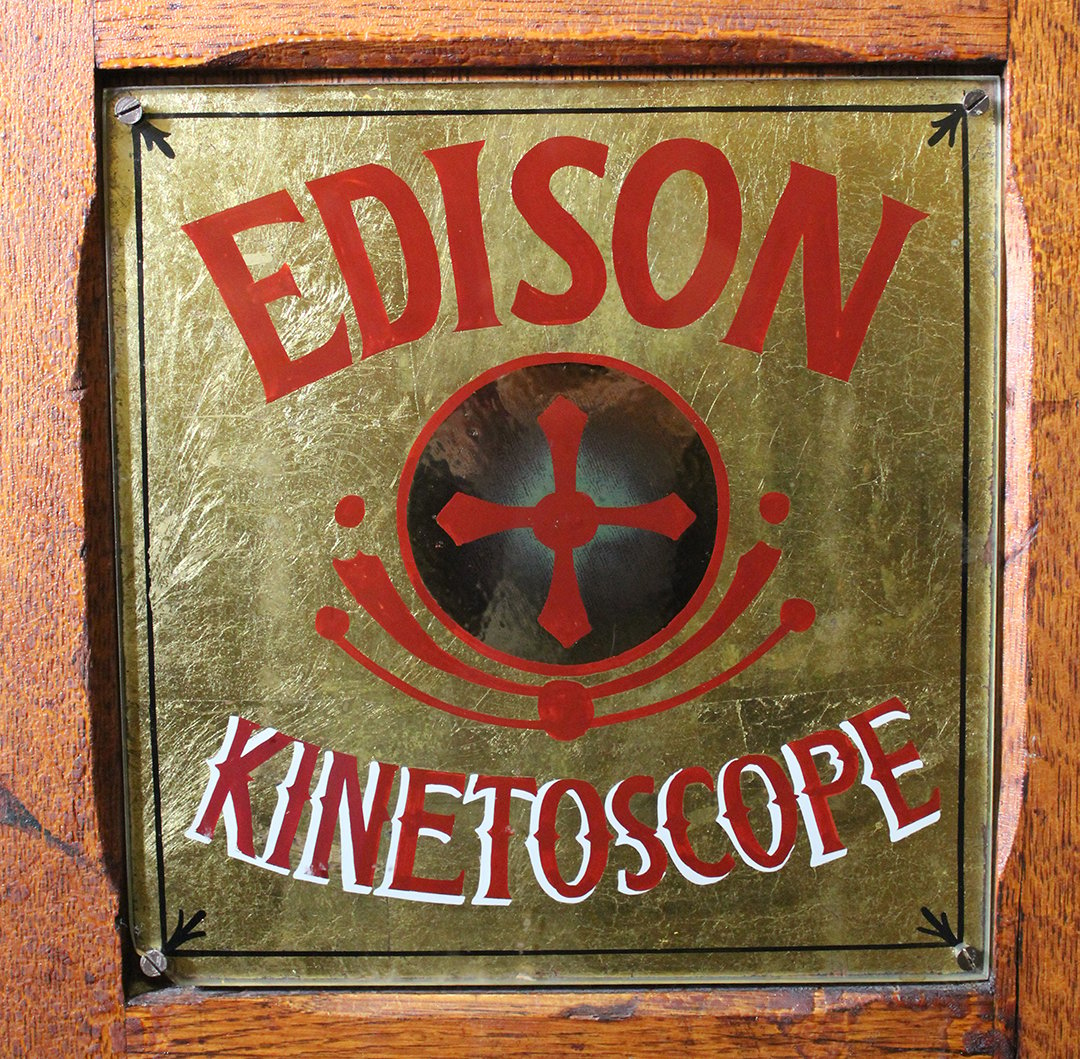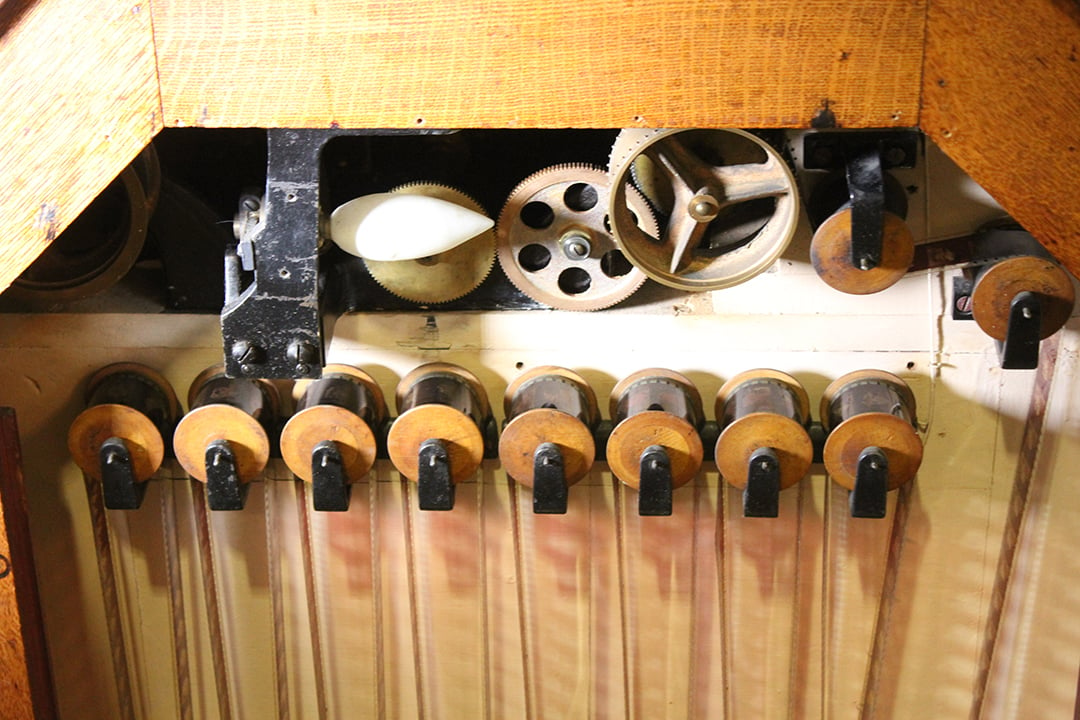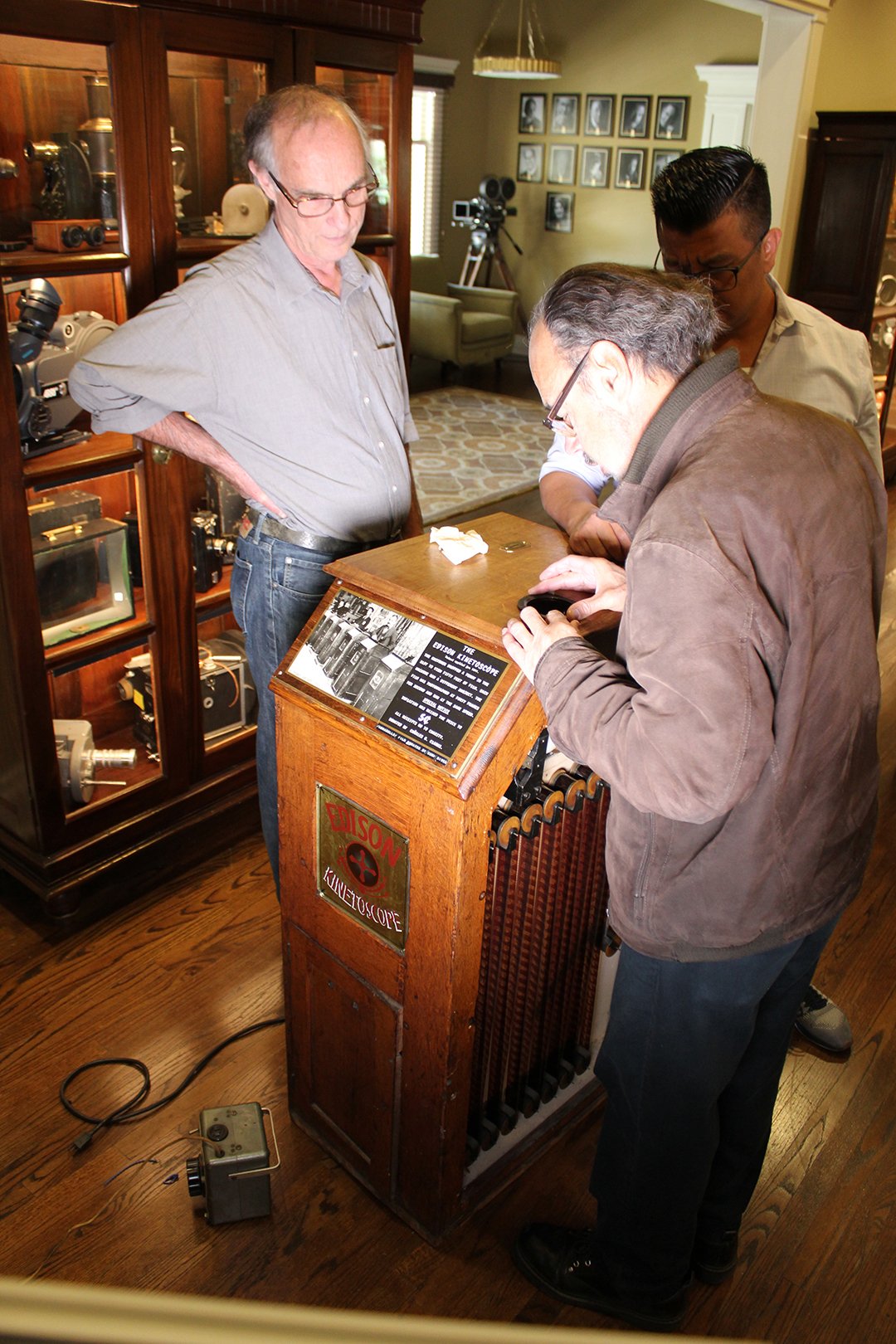
The Kinetoscope was an early motion picture exhibition device, and the first to utilize sequential images printed on a strip of perforated, flexible, photographic film driven by sprockets and an intermittent movement.
A product of the Thomas A. Edison labs, the Kinetoscope’s name was coined from the Greek roots kineto- (“movement”) and scopos (“to view”).
Notes Wikipedia:
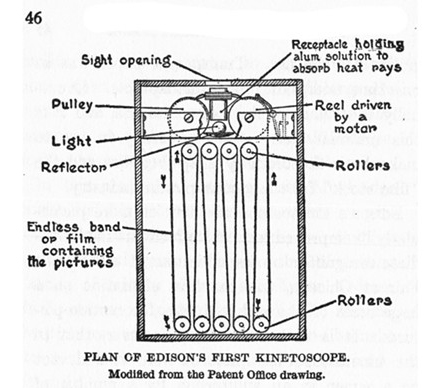
The Kinetoscope was designed for films to be viewed by one individual at a time through a peephole viewer window at the top of the device. The Kinetoscope was not a movie projector, but introduced the basic approach that would become the standard for all cinematic projection before the advent of video, by creating the illusion of movement by conveying a strip of perforated film bearing sequential images over a light source with a high-speed shutter.
A process using roll film first described in a patent application submitted in France and the U.S. by French inventor Louis Le Prince, the concept was also used by U.S. inventor Thomas Edison in 1889, and subsequently developed by his employee William Kennedy Laurie Dickson between 1889 and 1892.
Dickson and his team at the Edison lab also devised the Kinetograph, an innovative motion picture camera with rapid intermittent, or stop-and-go, film movement, to photograph movies for in-house experiments and, eventually, commercial Kinetoscope presentations.
The premiere of the Kinetoscope was held at the Brooklyn Institute of Arts and Sciences on May 9, 1893.
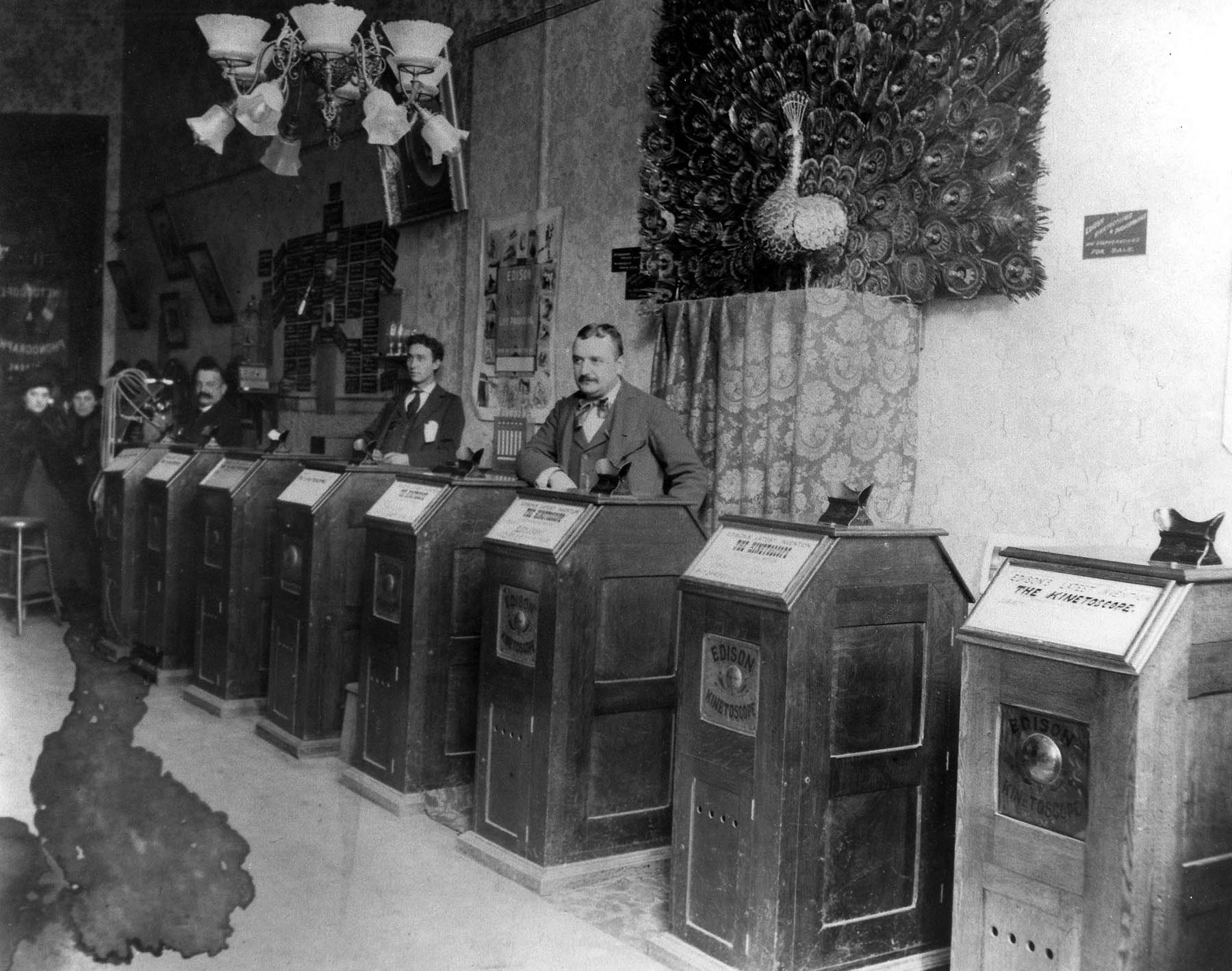
In the summer of 1894, the Kinetoscope was demonstrated at 20, boulevard Poissonnière in Paris; this was one of the primary inspirations to the Lumière brothers, who would go on to develop the first commercially successful movie projection system.
Over the course of 1895, it became clear that the Kinetoscope was going to lose out on one end to projected motion pictures and, on the other, to a new “peep show” device, the cheap, flip-book-based Mutoscope.
The ASC’s example of the Kinetoscope was donated to the Society by Kemp R. Niver, ASC. The devices are rare as once they became obsolete and no longer generated income, they were quite quickly pulled from service and scrapped.
The wooden top of the device is a replica/replacement (as the original was damaged), but it is in good working order after being serviced in 2018.
